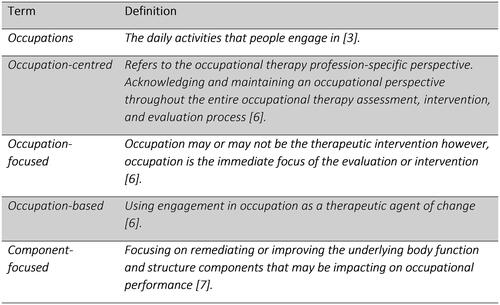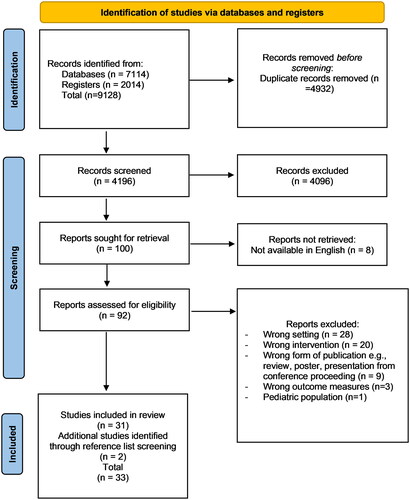Figures & data
Figure 1. Glossary of key terms.

Table 1. Hierarchy of evidence.
Table 2. Summary of included studies: participants, interventions, outcome measures and results (n = 33).
Table 3. Level of evidence and quality assessment scores for included RCTs using the PEDro scale (n = 12).
Table 4. Level of evidence and quality assessment scores for all other study designs using the MMAT (n = 21).
Figure 2. PRISMA Flow diagram.

